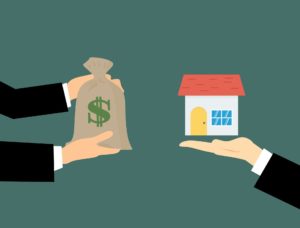 Mortgage risk jumped in April setting a new series high according to the quarterly National Mortgage Risk Index (NMRI) released by the American Enterprise Institute’s (AEI) Center on Housing Markets and Finance on Monday. The rise in risk was primarily driven by agencies further loosening leverage to maintain levels of mortgage activity.
Mortgage risk jumped in April setting a new series high according to the quarterly National Mortgage Risk Index (NMRI) released by the American Enterprise Institute’s (AEI) Center on Housing Markets and Finance on Monday. The rise in risk was primarily driven by agencies further loosening leverage to maintain levels of mortgage activity.
The quarterly index monitors market stability through real-time tracking of leverage and is set up like a stress test that places loans in risk buckets and assesses default risk based on the performance of 2007 vintage loans with similar characteristics.
The AEI has said that three key drivers are pushing mortgages towards greater risk. First, a greater availability of income leverage that is allowing borrowers to compensate for aster home price appreciation; second, a shift towards lower down payment loans; and third a greater presence of cash out refis as tappable equity of homeowners increases.
According to the data released by AEI, the April refinance NMRI set an all-time series’ high driven by a leap in the Cash-out index. “With the national seller’s market now in its 70th month, this additional leverage is being absorbed into higher house prices,” the report said.
“The multiyear surge in home prices, particularly for entry-level homebuyers continues unabated and is fueled by high-risk mortgages guaranteed by taxpayers,” noted Edward Pinto, Co-Director of the AEI’s Center on Housing Markets and Finance. “We see no halt to this trend so long as FHA, the GSEs, and the VA continue offering easy mortgage credit terms which keep demand well more than supply.”
The report also indicates a considerable spread of default rates across risk buckets, with borrowers who had a credit score between 620 and 689 falling in the high to very high-risk buckets. Borrowers in this credit score range were likely to have a default rate between 22.7 percent and 45.8 percent, the report indicated.
For purchase loans, the NMRI found, credit easing continued with the composite NMRI for purchase loans jumping 0.5 points from its elevated levels a year ago. The first-time buyer index rose 0.6 points on increases in FHA loans. AEI said that the rising prices had a disparate impact on buyers, benefiting repeat buyers through price appreciation and hurting first-time buyers who had to take on more leverage.
“Leverage matters for house prices,” said Tobias Peter, Senior Research Analyst at AEI’s Center on Housing Markets and Finance. “The greater availability of plain-vanilla leverage for lower-income borrowers during the current seller’s market has inflated a house price boom that is most prevalent at the lower end of the price spectrum.”
The AEI said that the composite index was consistently trending up since mid-2013, with FHA leading the way. With FHA, Fannie, and VA indices all setting new or matched series highs in April, the report projected that unless household income accelerated, future support for the housing market was likely to involve further increases in leverage from an already high level.

 theMReport.com Your trusted source for mortgage banking news
theMReport.com Your trusted source for mortgage banking news








